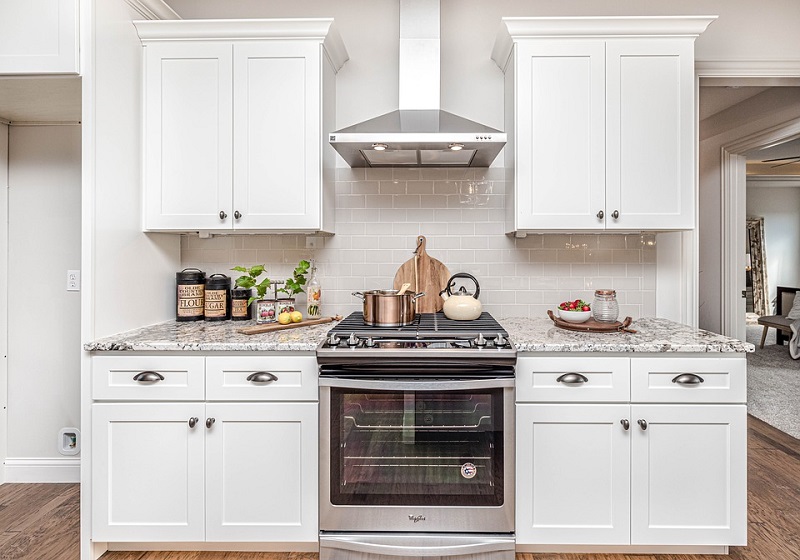Are you wondering How To Install Kitchen Cabinets? do not worry we at BestDamascusKnife giving you guidance on How To Install Kitchen Cabinets. The kitchen cabinetry has produced something of a poor rap. Certainly, custom kitchen furniture can be as costly as you make them, with some installs amounting to tens of thousands of dollars, but wasting that sort of money is not required to achieve impressive outcomes. Opting for pre-made produce furniture and fixing them yourself will hold you within budget without negotiating on appearances or quality. Therefore, grab a friend (you will be praising yourself when it appears to hang those top cabinets) and some accessories, because we have got everything you lack to comprehend to install cabinets like a professional.
Step By Step Guide On How To Install Kitchen Cabinets

Step By Step Guide On How To Install Kitchen Cabinets
1: At First Measure and Mark the Wall
In the first step Measure the height of the bottom cabinets. Most maximum regular cabinets are 34-1/2 inches high. Add 1-1/2 inches for a regular countertop and 18 inches for a regular backsplash, (though some creators now need a 20-inch backsplash to create a place for tiny devices). With an 18-inch backsplash, the complete size should be 54 inches from the floor to the rear of the top cabinets. If your floor is not even, be assured to measure from the largest point onward the wall.
Trace a straight line over the wall at this 54-inch point which will work as a leader for fixing the cabinets. Be assured to utilize a level to confirm this line is exactly parallel.
Utilize a studded glass to find the wall studs. The wall studs are important to correctly support the weight of the cabinets.
Note: Give particular consideration to the location of all electrical wiring and pipes.
2: Safe Ledger Board
Now save a ledger board to the wall, twisting it into the traced studs to momentarily hold the weight of the cupboards while the installation. Be assured the doors and tools are excluded from the cupboards to make them more moderate and simpler to fix.
3: Attach the Wall Cabinets
In the third step attach multiple cupboards as you can carefully lift and place on the ledger board — normally two. Apply clamps to fasten the stiles (the upright sections on the face of the cupboard frames) of the cupboards collectively and check for plumb, making assured the fronts of the cabinets are flush.
Next, predrill and adjust the two cabinets collectively at the stile with the screws. Affix one screw on the top and base in the front and back where the two cabinets meet.
Now lift the cabinets over the ledger board and check for plumb and level. Shim the cupboards if required.
Once you have shimmed for plumb and level, guard the cupboards into the wall at the studs. Be assured to predrill and attach the bolts by the more solid framing piece along the top of the cabinets.
Review for plumb and level while you are adjusting the cabinets. Replicate this method for each of the wall cupboards. If a hole subsists between the wall and the last cabinet, utilize a filler bar (provided by the company) to insert the gap. Before adjusting the last cabinet, measure, mark, cut, and adjust this item to the side of the last cupboard.
After all the cupboards are in position, join the doors and plumbing. Raise the ledger board when you are completed fixing the wall cabinets.
4: Install Base Cabinets
If the ground is not even, discover the most leading position in the floor onward the wall where the cabinets will be fixed. It is most useful to try to begin the first cabinet fittings as close to this high point as probable — it is simpler to shim beneath the cabinets on the deeper places to make them equalize with this initial one, preferably than beginning on a low end and having to cut the bases of the cupboards while operating “uphill”.
Measure base cupboards and utilize the pencil and level to mark a level line on the wall from the high point in the floor to the cupboard height. Be assured to utilize a level to ensure this line will be reliable horizontal. This is the example to be followed for fitting.
Utilize the stud discoverer to find and mark the studs onward this line throughout the room.
Dry fit your first cabinet into position and check for level over the top. If required, shim till level.
Now, predrill by the top framing piece into the wall studs and adjust the cabinet into position with screws. Re-check level after adjusting the cabinet.
Redo this method till all of the bottom cabinets are fitted. Attach the doors and hardware after all of your cupboards are in position.
Editor’s Recommendations
- How To Mix Dough Without A Mixer
- How to use a dough whisk
- Dough Hook Alternative
- What Is A Flat Whisk Used For
- Why Do You Need Dough Whisk
- Why Every Baker Needs A Danish Dough Whisk
- Dutch vs Danish
- How To Paint Kitchen Cabinets Without Sanding
- How to seal the chalk paint kitchen cabinets

